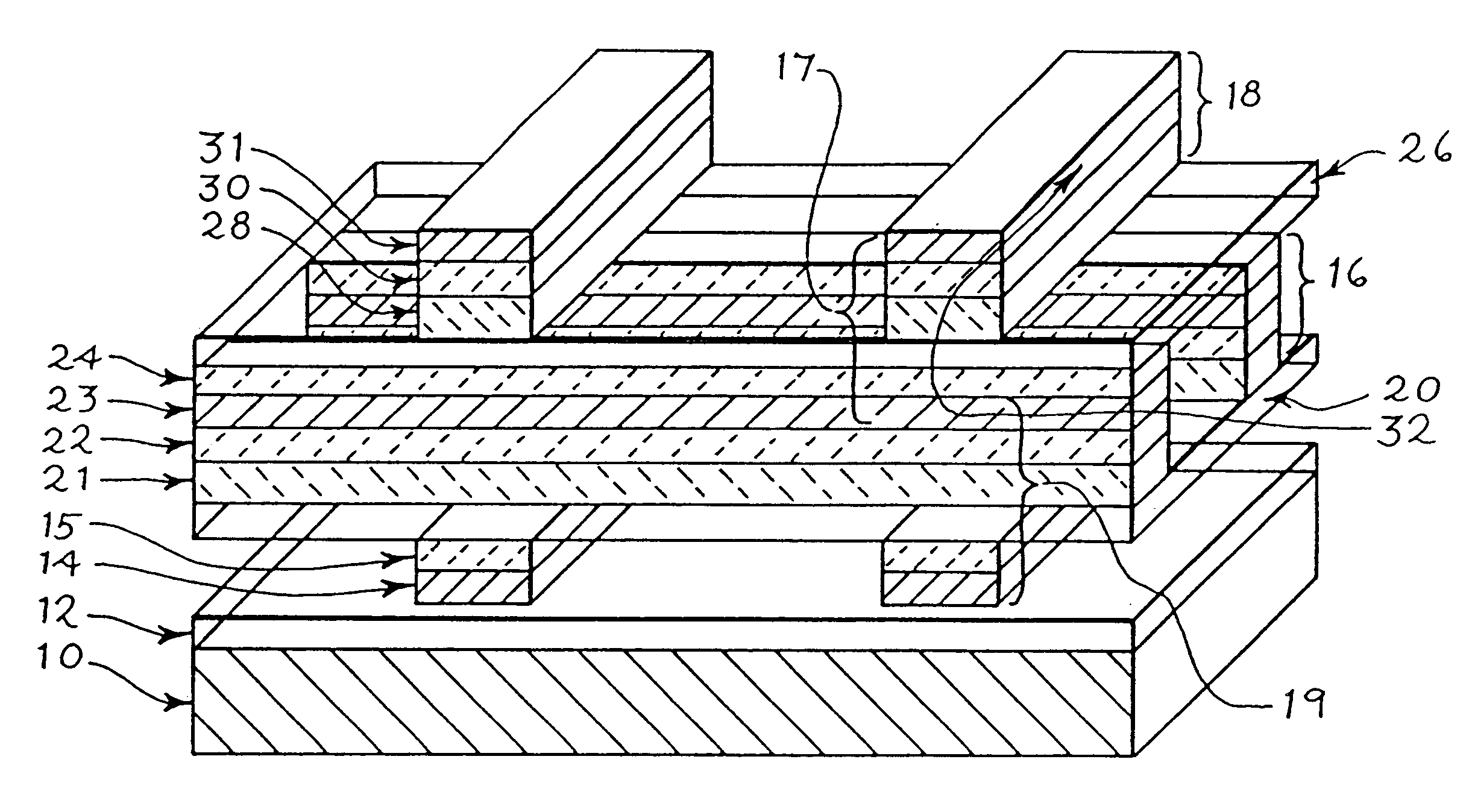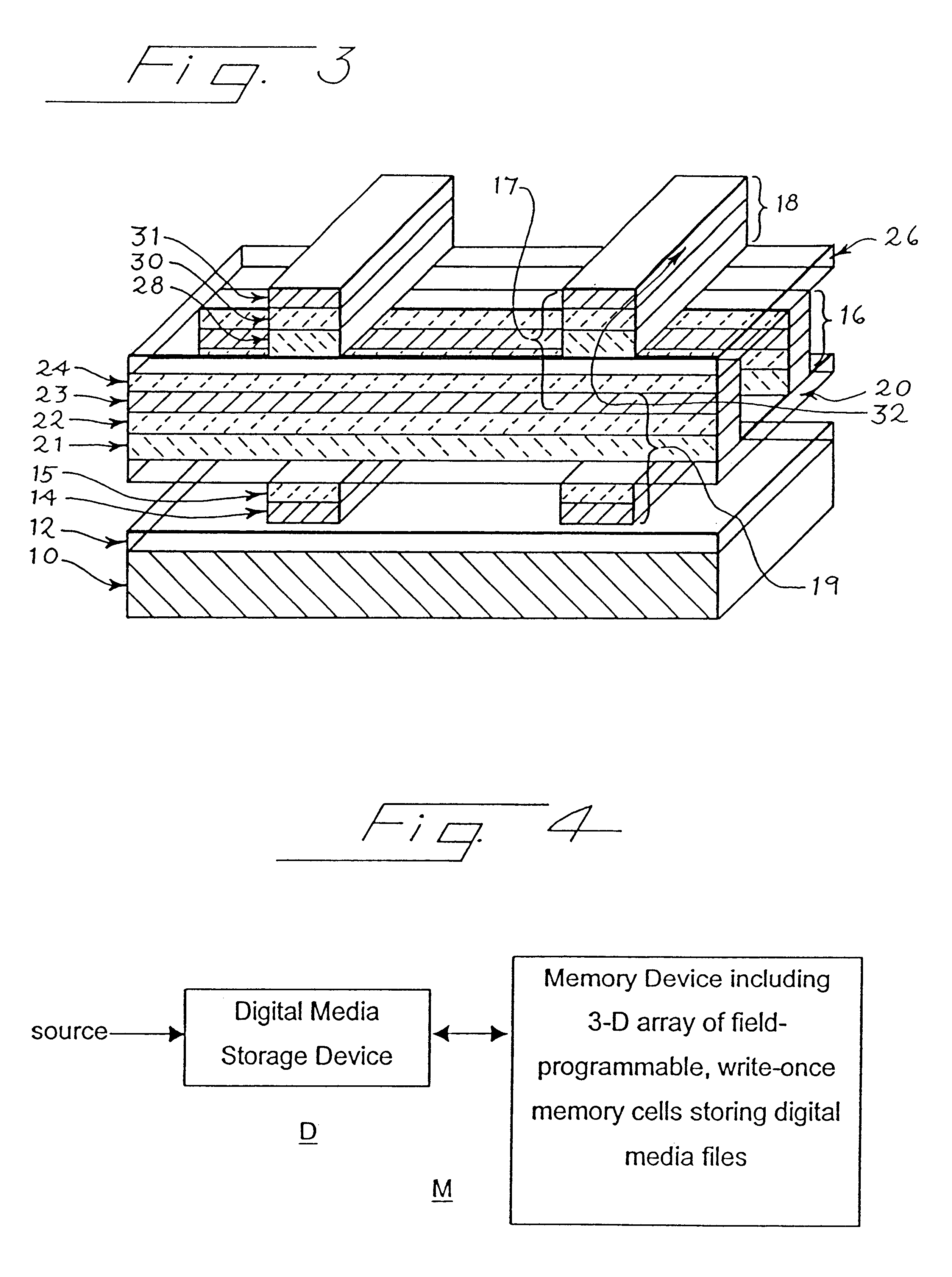Low cost three-dimensional memory array
a three-dimensional memory array and low-cost technology, applied in the field of low-cost three-dimensional memory arrays, can solve the problems of large devices giving rise to relatively large memory cells, high cost of memory chips, and need relative large switching devices, so as to reduce cost, reduce manufacturing costs, and reduce chip area
- Summary
- Abstract
- Description
- Claims
- Application Information
AI Technical Summary
Benefits of technology
Problems solved by technology
Method used
Image
Examples
Embodiment Construction
A low-cost, three-dimensional memory array is described. In the following description, numerous specific details are set forth such as specific materials and layer thicknesses. It will be apparent, however, to one skilled in the art that the present invention may be practiced without these details. In other instances, well-known circuits and fabrication techniques have not been set forth in detail in order not to unnecessarily obscure the present invention.
General Discussion
In the embodiments described below, memory cells are organized and built in three dimensions rather than two. There are several layers of memory cells, and the layers are vertically stacked above one another. The three dimensions are called "rows", "columns", and "layers". Typically, the rows and columns are generally parallel to the upper surface of an underlying substrate, and the layers are separated from one another along a direction perpendicular to the upper surface of the underlying substrate.
Some memory c...
PUM
 Login to View More
Login to View More Abstract
Description
Claims
Application Information
 Login to View More
Login to View More - R&D
- Intellectual Property
- Life Sciences
- Materials
- Tech Scout
- Unparalleled Data Quality
- Higher Quality Content
- 60% Fewer Hallucinations
Browse by: Latest US Patents, China's latest patents, Technical Efficacy Thesaurus, Application Domain, Technology Topic, Popular Technical Reports.
© 2025 PatSnap. All rights reserved.Legal|Privacy policy|Modern Slavery Act Transparency Statement|Sitemap|About US| Contact US: help@patsnap.com



